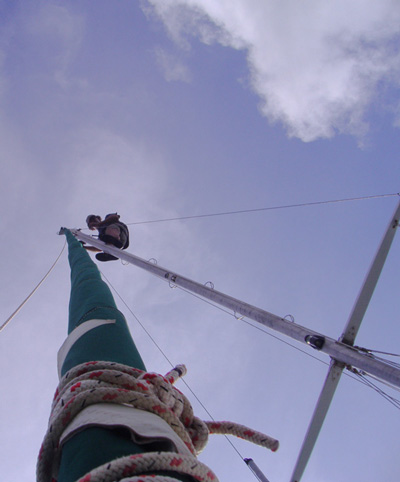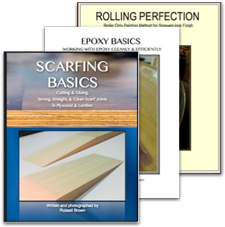A new low on the greed front, something about child labor, and in the "Just how much insanity can you take" department...
I'll get right to the point and point out that the old build-yourself-a-boat-in-your-yard model of building a boat is no longer with us. You can spell that D-E-A-D as the proverbial door nail. The cause of death is a combination of the powers that be and your neighbors being less accepting of folks working on things like a boat within view or earshot and mostly because the cost of materials has mostly priced the home boat-builder out of existence.
Seriously, from where I sit that's a real bummer.
Of course, the need for some folks with dreams of tropical anchorages to build their own boat will find cunning and creative ways around most obstacles and, as the late Hunter S Thompson pointed out...
In my too many decades of experience in boat building I've learned that the folks who are most successful with boat projects are those who treat the exercise in a professional manner and treat the actual build just like a real business would.
One of the big disadvantages for home builders is that not only are the material costs high in general but that a single builder does not have the purchasing power to bring the costs of those materials to an affordable level.
Another disadvantage of note is that most sailboat designs available are not really all that builder friendly. Far too many stock designs take ease of building or material costs into account as most stock plans were never designed to be stock designs but to be built by professional builders.
With that in mind let's take a look at a couple of 30-foot catamarans...
The Wharram Tiki 30 is designed to be home built. It has a simple construction method using accessible materials. It's a pretty awesome design that can be built by a motivated builder in 900 hours of labor..
There's a bridge deck pod you can add to the build for more room but the thing is what makes it such a nice little catamaran is that it's a nice little catamaran. The headroom in the hulls is less than five-feet and the headroom over the berths is a kiss less than three-feet. The good news is that the design works just fine as it is .
However the inbuilt desire of many might want to make it bigger add more headroom which would become a much bigger, more expensive boat. Trying to make an significant changes while keeping the boat to thirty feet would destroy any vestige of performance and leave you an unfortunate result.
Building the boat as designed is easy and quick providing you treat the project like a real job.
One of the issues with the Wharram and other plywood designs is that as the cost of plywood keeps rising while the quality of "affordable" plywood becomes worse and worse.
Michael Schacht with his 30-foot design-in-progress ARGO in a lot of ways mirrors the simplicity of the Tiki 30 however, due to the high cost of plywood the decision to work with more affordable composites was taken.
Since the use of composites allows for a more refined shape and, when combined with a couple of simple molds and a modular construction, adds the possibility of a great reduction in labor.
The design as shown has quite a bit more room than the Tiki 30 albeit with the same headroom issues. Which, I'll point out that being 6'5" I would not find the headroom to be a deal breaker since if I want to stand up I can always go outside. As far as interior ergonomics go, the real test is simply having enough room to do the mundane tasks needful for life aboard.
Having built a Wharrram Tiki 31 and have more than a passing experience with modular construction I'll be getting into how one can build a Tiki 30 or an ARGO faster and cheaper when we get into the economics of scale and how it's going to be a major factor in successfully building either design.
Listening to Camila Cabello
So it goes...








